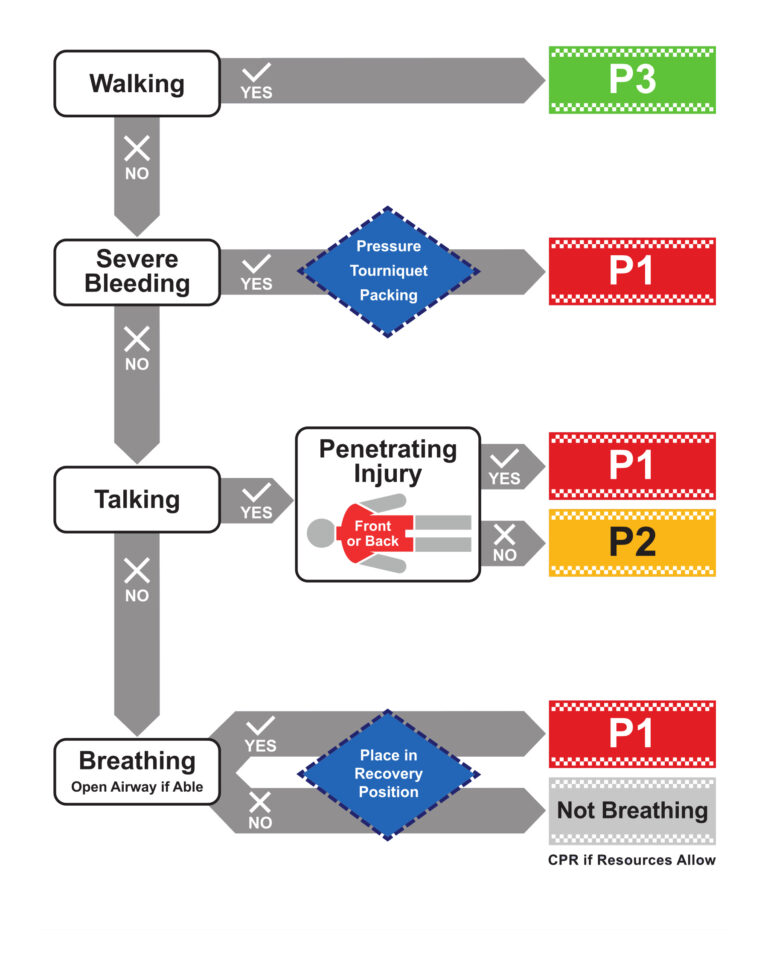Disclaimer: This website is for study and revision purposes only. It is not medical advice and should not be relied upon in real-world patient care. By using this website, you acknowledge and agree to our Medical Disclaimer.
Ten Second Triage (TST) is designed to be a rapid, life-saving prioritization tool for use at the scene of a major incident or mass casualty situation.
JESIP defines a Major Incident as “An event or situation with a range of serious consequences which requires special arrangements to be implemented by one or more emergency responder agency.” For responders on the ground, this will mean a change from performing the standard Primary Survery on a single casualty, to performing Triage and life saving interventions only.
Instead of the Primary Survey the initial actions will be to perform triage using an appropriate tool. The standard tool for first responders is now “Ten Second Triage” (TST). This separates casualties into P1, P2, P3, and “Not Breathing” – where P1 is the highest priority casualties. A responder will perform an initial triage, attach triage bands to each casualty’s wrist, and then move on to triage the next casualty. A very small number of Live Saving Interventions (LSIs) may be performed as directed by the TST process, only.
Ten Second Triage is designed to take no more than 10 seconds per casualty, and uses a simple four step process:
Another triage tool that may be used, especially at major incidents, is the NHS Major Incident Triage Tool (MITT). However, this is designed for use by health care professionals and therefore will likely be used at the casualty clearing point (CCP) rather than at the initial scene.
Another useful tool to be aware of is the M/ETHANE report, which is an initial report given at the scene of a major incident. It is designed to offer a structured, standardised method for communicating key information about a major incident in order to help mobilise appropriate resources quickly.
